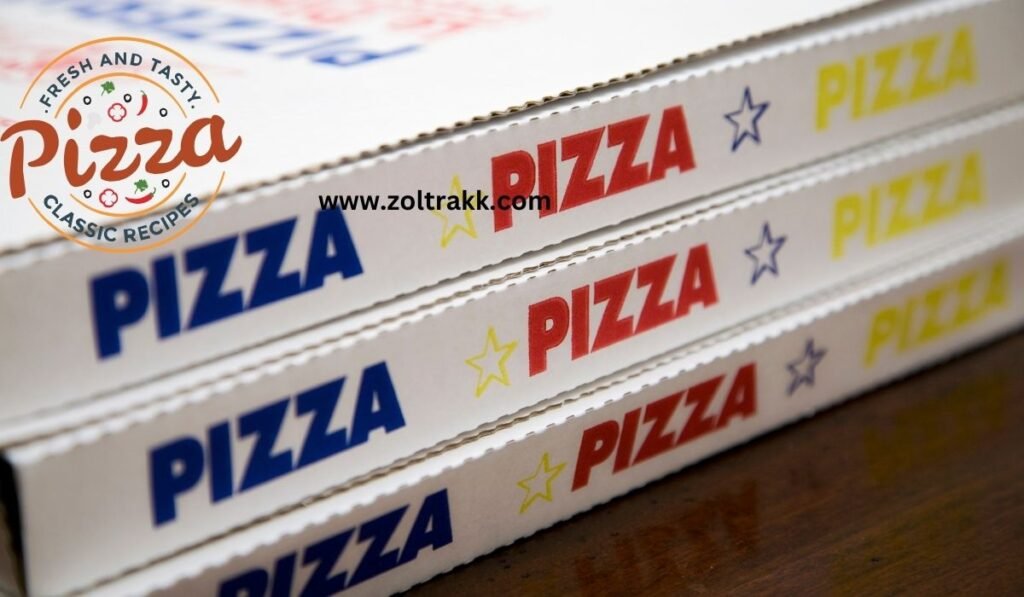Pizza hut classic locations, Pizza Hut’s classic places preserve a unique area in American rapid-meals history, acknowledged for their exceptional red roofs, dine-in studies, and iconic architecture. From its humble beginnings in 1958 in Wichita, Kansas, Pizza Hut quickly accelerated to one of the most crucial pizza chains globally, with over 18,000 locations in more than one hundred countries. The chain’s early restaurants became cultural landmarks, presenting a unique take a seat-down experience that outstanding them from the competition. While many conventional Pizza Hut locations have closed, been made over, or transitioned to transport and carry fashions, their legacy endures through preserved websites, nostalgic memories, and retro-themed merchandise. This article explores the evolution, impact, and ongoing efforts to have a good time in the records of these traditional Pizza Hut locations.
Key Takeaways:
- Pizza Hut’s classic locations are known for their iconic red roofs, distinctive architecture, and nostalgic dining experiences.
- The original Pizza Hut location opened in 1958 in Wichita, Kansas, and grew to over 18,000 locations worldwide.
- Vintage Pizza Hut buildings are instantly recognizable, with many converted into new businesses that retain their unique architecture.
- Classic locations offered dine-in service, a unique concept in the fast-food industry that helped build the brand’s identity.
- While many original locations have closed or been remodeled, some still operate, preserving the traditional Pizza Hut experience.
- The shift to delivery and carryout models has changed the restaurant’s landscape, but the classic dine-in locations remain a cherished memory.
- Efforts to preserve the history of Pizza Hut locations include retro-themed restaurants and merchandise.
What Are Pizza Hut’s Conventional Places?
Pizza Hut’s traditional locations refer to the original and early Pizza Hut restaurants recognized for their unique structure, dine-in experience, and cultural importance. These locations were marked by using their distinct “purple Roof” homes, buffet-style carriers, and family-friendly surroundings. The classic layout, featuring purple shingle roofs, trapezoidal windows, and a secure interior format, has become synonymous with the brand from the Sixties through the Nineties. Those locations helped define the Pizza Hut dining revel earlier than the shift to a shipping and carryout-centered version within the 21st century.
Growth of Pizza Hut Locations Worldwide
| Year | Number of Locations Worldwide |
|---|---|
| 1968 | 310 |
| 1980 | 2,000 |
| 1990 | 7,500 |
| 2000 | 12,000 |
| 2020 | 18,703 |
Data Source: Pizza Hut Corporate Records
Evolution of Pizza Hut’s traditional locations
The first Pizza Hut: Wichita, Kansas (1958)
Pizza Hut was based using brothers Dan and Frank Carney in 1958 in Wichita, Kansas. The primary Pizza Hut was a small building with confined seating. However, it quickly won popularity due to its delicious pizza and friendly environment. The Carney brothers invested $600 borrowed from their mother to open this primary location, which set the degree for a worldwide pizza empire. Within a year, they started franchising, leading to speedy enlargement.
The iconic crimson Roof design (1969)
In 1969, Pizza Hut delivered its famous red roof design, which has become a recognizable brand image. Architect Richard D. Burke designed the construction to create relaxed and welcoming surroundings. The layout covered red shingle roofs, trapezoidal home windows, and a brick outdoors, developing a distinctive appearance that separated Pizza Hut from different speedy-meals chains. This design turned into so iconic that many repurposed Pizza Hut buildings these days still hold the signature purple roof.
Three. Dine-In concept and own family-orientated revel in (Nineteen Seventies-Eighties)
all through the 1970s and 1980s, Pizza Hut capitalized on the developing fashion of casual eating by supplying full-service, sit-down enjoys. Unlike many rapid-food chains that focused on brief providers, Pizza Hut’s dine-in concept emphasized its own family-pleasant surroundings where customers could enjoy meals in a secure place. The restaurants featured at-ease seating, ambient lighting fixtures, and arcade games, developing unique eating enjoyment that has become a staple of the American subculture.
Popular Features of Classic Pizza Hut Locations
| Feature | Description |
|---|---|
| Red Roof Design | Iconic red shingle roofs and trapezoidal windows |
| Dine-In Service | Full-service dining with waitstaff and menus |
| Salad Bars | Self-service salad bars offering fresh vegetables |
| Buffet-Style Service | All-you-can-eat pizza and salad buffets |
| Arcade Games | Classic video games and claw machines for children |
Worldwide growth and Cultural effect (Nineteen Eighties-1990s)

As Pizza Hut extended globally within the nineteen-eighties and 1990s, its classic places became symbols of Yankee tradition overseas. The brand’s familiar red roof and dine-in service delivered a taste of yank eating to countries worldwide. Via 1990, Pizza Hut had over 7,500 global locations, such as terrific branches, i.e., Japan, Australia, the UK, and Canada.
Shift to transport and Carryout version (2000s-gift)
The early 2000s saw an extensive shift inside the fast-food enterprise, with a growing number of calls for shipping and carryout options. Pizza Hut responded to those modifications by transforming or maintaining lots of its classic dine-in locations. With the aid of 2020, the agency transitioned to a version emphasizing transport and carryout, decreasing the variety of traditional dine-in eating places. however, a few conventional locations continue to cherished by clients looking for nostalgic dining enjoyment.
Iconic Pizza Hut classic locations nonetheless standing
while many original Pizza Hut classic locations have closed or undergone significant adjustments, some operate and maintain the nostalgic enjoyment that made them well-known. These locations are famous among fanatics who appreciate the vintage atmosphere and traditional menu gadgets.
Original Pizza Hut Museum (Wichita, Kansas)
The authentic Pizza Hut Museum in Wichita, Kansas, is a preserved website online of the first Pizza Hut restaurant. It is a tribute to the chain’s humble beginnings and gives visitors a glimpse into the emblem’s records. The museum packed with memorabilia, snapshots. And artifacts from the early days of Pizza Hut, making it a must-go for fans and history fanatics.
Classic Pizza Hut in Athens, Ohio
Athens, Ohio, is domestic to one of the few final Pizza Hut places that maintain its conventional structure and dine-in provider. With its iconic red roof, vintage interior, and buffet-fashion services. This location is a nostalgic ride again in time for those who grew up playing Pizza Hut in its heyday.
Retro Pizza Hut in Greenville, Alabama
The Pizza Hut in Greenville, Alabama, maintains its authentic Nineteen Eighties decor. With timber-paneled walls, traditional arcade games, and a salad bar. This place has ended up as a neighborhood landmark and a famous vacation spot for Pizza Hut enthusiasts.
The Cultural Importance of Pizza Hut’s Classic Locations
Pizza Hut’s conventional locations preserve cultural importance as they represent a unique length within the American dining panorama. These restaurants became popular in the 1970s and 1980s, accumulating spots for families, sports activities groups, and network companies. Their dine-in model and alluring environment created a sense of community many speedy-food chains lacked. The enduring purple roof layout also symbolized nostalgia for those who grew up eating at Pizza Hut.
A gathering region for households and friends
The dine-in revel at Pizza Hut’s conventional places fostered a feeling of togetherness. Families would gather for dinner, kids could play arcade video games, and buddies might share pizza and recollections. Those locations became community hubs where people celebrated birthdays, sports victories, and unique occasions.
Have an impact on fast meals and casual dining trends

Pizza Hut’s classic locations prompted the development of different rapid meals and informal dining restaurants. The emphasis on a sit-down-down revel, blended with the ease of fast meals, stimulated different chains to incorporate comparable factors. Eating places like Olive Lawn. TGI Fridays, and Applebee’s constructed upon the muse set up by Pizza Hut’s dine-in model.
Architectural Legacy and Repurposing of Conventional Homes
Many former Pizza Hut buildings had repurposed into new companies, yet their iconic architecture remains recognizable. From Chinese eating places to dental workplaces, these repurposed homes regularly hold the exclusive crimson roof, which has become an enduring image of Pizza Hut’s legacy.
Regularly asked Questions (FAQs)
What defines a Pizza Hut classic vicinity?
Iconic crimson roof layouts, dine-in carriers, buffet-fashion services, and family-friendly surroundings characterize Pizza Hut’s classic places. Those places became cultural landmarks within the Seventies and Nineteen Eighties. Offering a unique eating enjoyment that set them aside from other fast-meal chains.
Are there any authentic Pizza Hut locations still in operation?
A few authentic Pizza Hut places are operating and have preserved their conventional layout and dine-in service. Examples encompass the authentic Pizza Hut Museum in Wichita, Kansas, and unfashionable-themed places in Athens, Ohio, and Greenville, Alabama.
What brought about the decline of Pizza Hut’s traditional locations?
The decline of Pizza Hut’s classic locations can attributed to the shift in customer possibilities closer to shipping and carryout fashions, multiplied opposition inside the rapid-food industry, and converting actual estate dynamics. As a result, many dine-in eating places have remodeled or closed to focus on more excellent green provider fashions.
Why are Pizza Hut’s classic locations considered nostalgic?
Pizza Hut’s classic locations taken into consideration as nostalgic because of their particular structure. Family-friendly atmosphere, and remarkable dine-in reports. For lots, these locations evoke reminiscences of early life, own family dinners. And network gatherings, making them a long-lasting symbol of yank culture.
Five. Can you still locate the classic Pizza Hut menu items?
While many Pizza Hut places have shifted to a delivery and carryout version. A few traditional dine-in places provide unique menu objects: the salad bar, pan pizza, and all-you-can-consume buffet.
Are there efforts to keep Pizza Hut’s conventional locations?
Sure, efforts to maintain Pizza Hut’s classic locations include unfashionable-themed restaurants. Merchandise, and fan communities committed to celebrating the brand’s records. The original Pizza Hut Museum in Wichita, Kansas, is a prime example of these upkeep efforts.
Conclusion
Pizza Hut’s conventional places are more than just restaurants; they’re part of American history and subculture. With their one-of-a-kind purple roofs, dine-in studies. And iconic structures, those locations have left an enduring effect on the quick-meals industry and continue to evoke nostalgia for generations of customers. While the panorama of Pizza Hut has advanced to satisfy cutting-edge demands. The legacy of its traditional places lives on through preserved websites, retro-themed eating places. And the enduring reminiscences of folks who enjoyed them.


